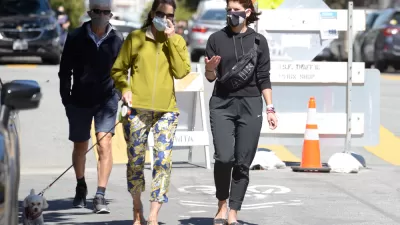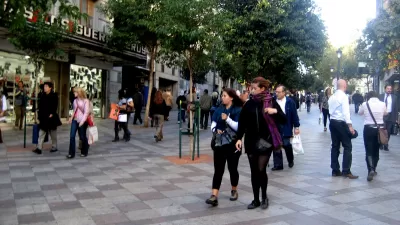Historical reports from the Regional Plan Association show that car-free streets is an idea almost as old as automobiles themselves.

A brief history of the Regional Plan Association’s research into road design and open streets highlights the deep roots of challenges cities still face today. Sidney Essex writes, “Recently, we unearthed from the RPA archives a New York Times article from 1928 that summarized a recommendation from the Regional Plan of New York and its Environs - also known as the First Regional Plan — about the inequity of pedestrian-free highways without parallel automobile-free urban streets.”
Almost a century later, advocates for open streets, including RPA, are making similar arguments. In 1928, RPA touted the economic benefits of open streets, pointing to the lower cost of building car-free streets. In their 2021 report, Re-Envisioning the Right of Way, they returned to economic benefits in a new way. “The research instead explored the potential of considering our shared streetscapes to be part of an integrated natural, transportation, and social system that can support local economies and food production.”
In 1928, RPA warned that giving up parts of residential streets to light industry leads to the loss of usable public space for pedestrians. “In 2021, RPA attempted to navigate this old tension between commerce and pedestrians by holding a symposium on the impacts and opportunities of e‑commerce in the region, which brought leading thinkers in the fields of supply chain management, transportation, land use, public finance, and waste management together to envision a region in which commerce is convenient, safe for pedestrians, and sustainable.”
FULL STORY: Open Streets Are an Old Idea Whose Time Has Come

Planetizen Federal Action Tracker
A weekly monitor of how Trump’s orders and actions are impacting planners and planning in America.

Maui's Vacation Rental Debate Turns Ugly
Verbal attacks, misinformation campaigns and fistfights plague a high-stakes debate to convert thousands of vacation rentals into long-term housing.

San Francisco Suspends Traffic Calming Amidst Record Deaths
Citing “a challenging fiscal landscape,” the city will cease the program on the heels of 42 traffic deaths, including 24 pedestrians.

Amtrak Rolls Out New Orleans to Alabama “Mardi Gras” Train
The new service will operate morning and evening departures between Mobile and New Orleans.

The Subversive Car-Free Guide to Trump's Great American Road Trip
Car-free ways to access Chicagoland’s best tourist attractions.

San Antonio and Austin are Fusing Into one Massive Megaregion
The region spanning the two central Texas cities is growing fast, posing challenges for local infrastructure and water supplies.
Urban Design for Planners 1: Software Tools
This six-course series explores essential urban design concepts using open source software and equips planners with the tools they need to participate fully in the urban design process.
Planning for Universal Design
Learn the tools for implementing Universal Design in planning regulations.
Heyer Gruel & Associates PA
JM Goldson LLC
Custer County Colorado
City of Camden Redevelopment Agency
City of Astoria
Transportation Research & Education Center (TREC) at Portland State University
Jefferson Parish Government
Camden Redevelopment Agency
City of Claremont





























